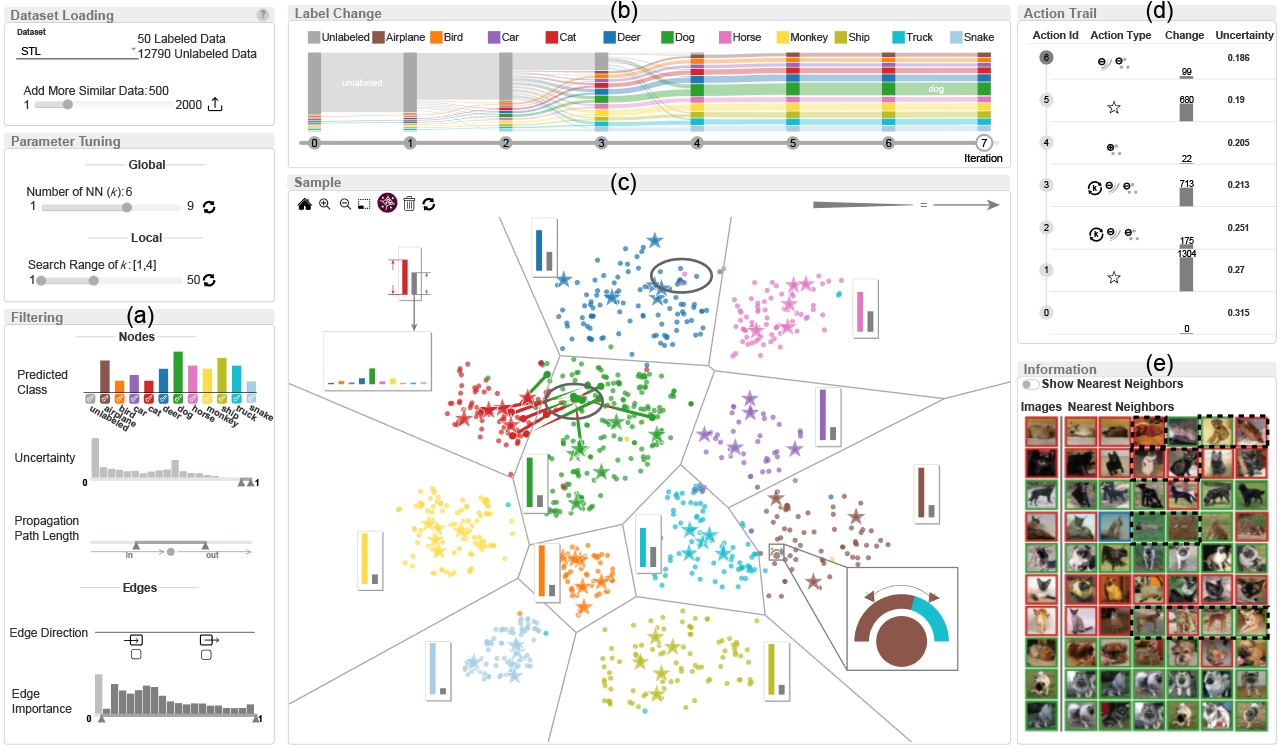Interactive Graph Construction for Graph-Based Semi-Supervised Learning
Changjian Chen, Zhaowei Wang, Jing Wu, Xiting Wang, Lan-Zhe Guo, Yu-Feng Li, Shixia Liu
External link (DOI)
View presentation:2021-10-28T16:15:00ZGMT-0600Change your timezone on the schedule page
2021-10-28T16:15:00Z

Fast forward
Direct link to video on YouTube: https://youtu.be/OlVUHKMGpTE
Keywords
Semi-supervised learning, unlabeled samples, graph quality
Abstract
Semi-supervised learning (SSL) provides a way to improve the performance of prediction models (e.g., classifier) via the usage of unlabeled samples. An effective and widely used method is to construct a graph that describes the relationship between labeled and unlabeled samples. Practical experience indicates that graph quality significantly affects the model performance. In this paper, we present a visual analysis method that interactively constructs a high-quality graph for better model performance. In particular, we propose an interactive graph construction method based on the large margin principle. We have developed a river visualization and a hybrid visualization that combines a scatterplot, a node-link diagram, and a bar chart, to convey the label propagation of graph-based SSL. Based on the understanding of the propagation, a user can select regions of interest to inspect and modify the graph. We conducted two case studies to showcase how our method facilitates the exploitation of labeled and unlabeled samples for improving model performance.